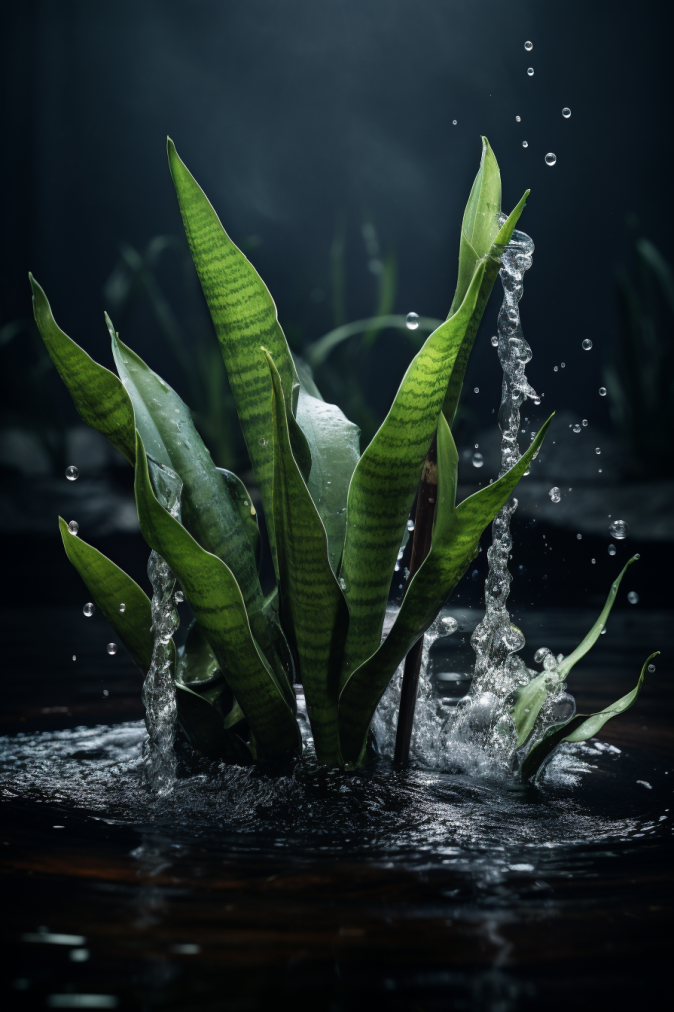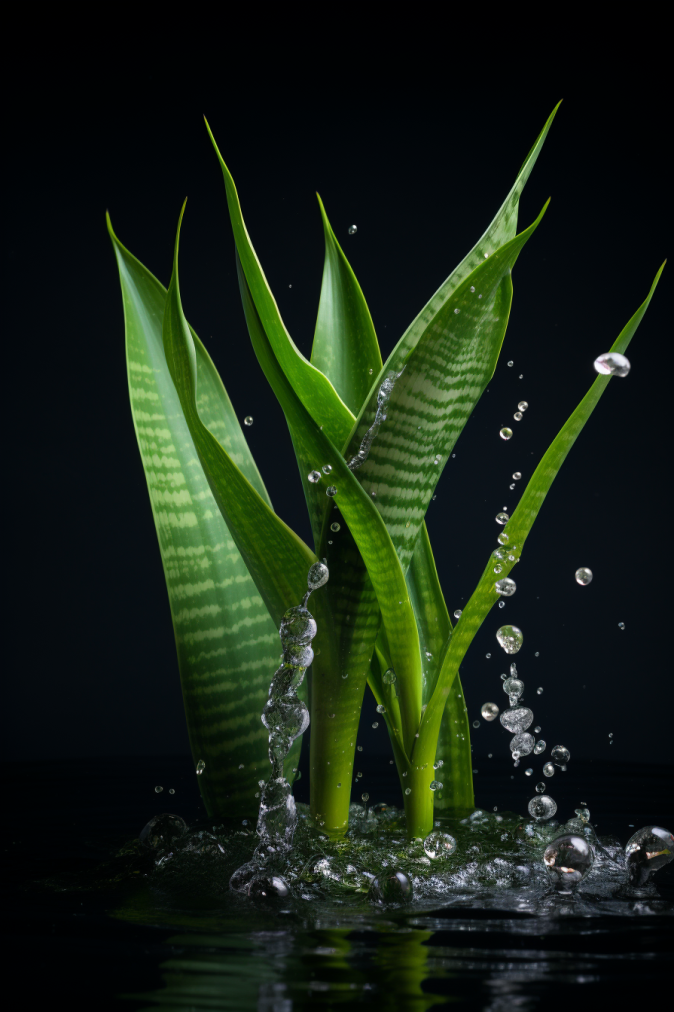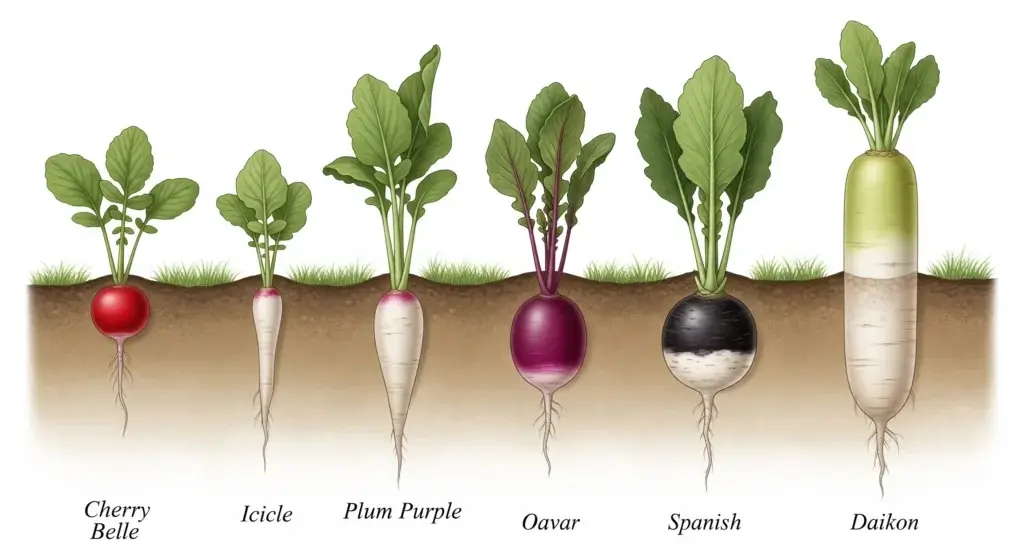
Sansevieria, commonly known as snake plants, captivate plant lovers with their tough nature and stunning looks.
These indoor darlings flaunt diverse shapes and sizes, winning the hearts of both beginners and experienced green thumbs.
One of their remarkable qualities is their knack for propagating in water, an effortless yet fulfilling process.
Why Water Propagation Works Wonders for Snake Plants
Water propagation stands as a highly effective method for nurturing snake plants, primarily owing to their innate capability to sprout roots directly in water.
Here’s a deeper dive into why this technique is so beneficial:
Root development in water
Snake plants possess a remarkable ability to grow roots in water, making the propagation process not just possible but highly successful.
Unlike some plants that struggle with water-based propagation, snake plants readily develop roots when placed in water, establishing a strong foundation for future growth.
- Read also: A Guide on How to Repot a Snake Plant
- Read also: Snake Plant Care Indoor for Thriving Bliss
Ease of root monitoring
The transparency of water offers a clear view of the root development process.
This makes it easy for plant enthusiasts to monitor the growth of the roots, observing their progress and ensuring they’re healthy and robust before the plant is transferred to soil.
Stronger root foundation
By allowing the roots to sprout and develop in water, snake plants establish a sturdy and well-formed root system.
This stronger foundation sets the stage for healthier growth and increased resilience when the plant is eventually moved to the soil.
Reduced risk of transplant shock
When snake plant cuttings are propagated directly in water, they encounter minimal stress during the transition to soil.
This significantly reduces the risk of transplant shock, ensuring a smoother adjustment and promoting better plant health post-transplantation.
Increased success rate
For many plant enthusiasts, water propagation often yields higher success rates compared to other methods.
The simplicity and reliability of this technique make it a go-to choice, especially for those seeking a successful outcome.
The ability of snake plants to thrive and establish roots in water makes this propagation technique a standout choice.
Educational experience
Beyond its practical benefits, water propagation offers an educational journey for plant enthusiasts.
Observing root growth and understanding the plant’s development process can be both fascinating and educational.
Accessibility of materials
Water propagation requires minimal supplies, typically only needing a clean container and fresh water.
This accessibility makes it a convenient choice for anyone interested in expanding their snake plant collection.
Beginner-friendly technique
Water propagation is a beginner-friendly method that requires minimal effort and expertise.
It’s a great starting point for those new to plant propagation, offering a straightforward and rewarding experience.

How Long Does A Snake Plant Take to Propagate
Snake plants, when propagated in water, typically take some time to develop roots before they are ready for transplantation.
When you first place the snake plant cutting in water, it might take a couple of weeks for any visible signs of root growth to appear.
Patience is key during this phase as roots start their development.
Root development duration varies, typically spanning from a few weeks to a couple of months.
The pace is affected by factors like temperature, light, and the cutting’s health.
Keeping a close watch during this phase is vital.
When the roots reach a few inches in length, the cutting is generally considered suitable for transplanting into soil.
At this stage, the roots are strong enough to support the plant’s growth in a new environment.
Materials and Supplies for Water Propagation
Gathering the right materials is crucial for a successful propagation journey. You’ll need:
- Sharp scissors or pruning shears
- Clean container: clear glass or jar
- Fresh water at room temperature
- Healthy snake plant cuttings (choose stems with at least a few inches in length)
- Optional: charcoal (for filtering).

Step-by-Step Guide to Water Propagation for Snake Plants
Let’s break down the water propagation process for snake plants into detailed steps:
Selecting and preparing cuttings
- Choose a healthy leaf cutting from your snake plant (at least 4-6 inches long). Ensure it’s a clean cut at the base, using sharp scissors or pruning shears.
- Allow the cutting to dry and form a callus for a day or two. This helps prevent rotting when placed in water.
Placing in water
- Get a clean glass or jar and fill it with room-temperature water. Choose a container that allows the cutting to be partially submerged.
- Gently place the prepared cutting into the water, ensuring at least an inch or two of the base is immersed. Avoid submerging the entire cutting.
Creating optimal conditions
- Position the container in a spot with indirect sunlight. Avoid direct sun exposure as it could heat the water excessively.
- Change the water every week to maintain cleanliness and provide fresh nutrients for the developing roots.
Monitoring and root development
- With patience, observe the cutting regularly for signs of root development, which should appear within 2-4 weeks. Tiny roots will gradually emerge from the submerged end of the cutting.
- Regularly check the roots’ progress, ensuring they’re healthy, steadily growing, and not showing signs of rot or decay.
Transplanting
- Once the roots have grown to a few inches in length (reach 2-3 inches long), it’s time for transplantation. Select well-draining soil suitable for indoor plants.
- Carefully transplant the cutting into the soil, handling the delicate roots gently to prevent damage. Ensure the roots are adequately covered but not buried too deeply.
Troubleshooting Common Issues in Snake Plant Water Propagation
Encountering problems during the water propagation process is common, but addressing them promptly can ensure successful growth.
Here’s a detailed guide on troubleshooting two common issues:
Slow root growth
- Check water quality: Poor water quality can hinder root development. Ensure the water is clean, preferably using filtered or distilled water to avoid mineral build-up.
- Light exposure: Inadequate indirect sunlight might slow down root growth. Move the container to a spot with slightly more light while still avoiding direct sun exposure.
Rotting
- Identifying signs: A foul smell or mushy stems are signs of rot. Act swiftly upon noticing these symptoms.
- Immediate action: Trim affected parts of the cutting immediately using clean, sharp scissors. Cut above the affected area, ensuring healthy tissue remains.
- Water change frequency: Increase the frequency of water changes to prevent bacterial growth. Changing the water more frequently helps maintain cleanliness and prevents the buildup of harmful pathogens.
Additional preventive measures
- Ensure the container used for water propagation is clean to prevent the introduction of pathogens.
- Avoid overcrowding cuttings in the same container, as it can lead to competition for nutrients and increased chances of rot.

Conclusion
Water propagation for snake plants offers a fulfilling journey and an opportunity to enrich your plant collection.
Through patience and attentive care, you’ll observe the remarkable growth of new roots, laying the groundwork for a robust and flourishing snake plant.
- Read also: Snake Plant Leaves Turning Yellow
- Read also: Why Your Snake Plant Leaves Are Curling
FAQs
While tap water can work, it’s best to use filtered or distilled water to avoid mineral build-up that may hinder growth.
It takes a few weeks to a couple of months for roots to develop, depending on various factors like temperature and light.



